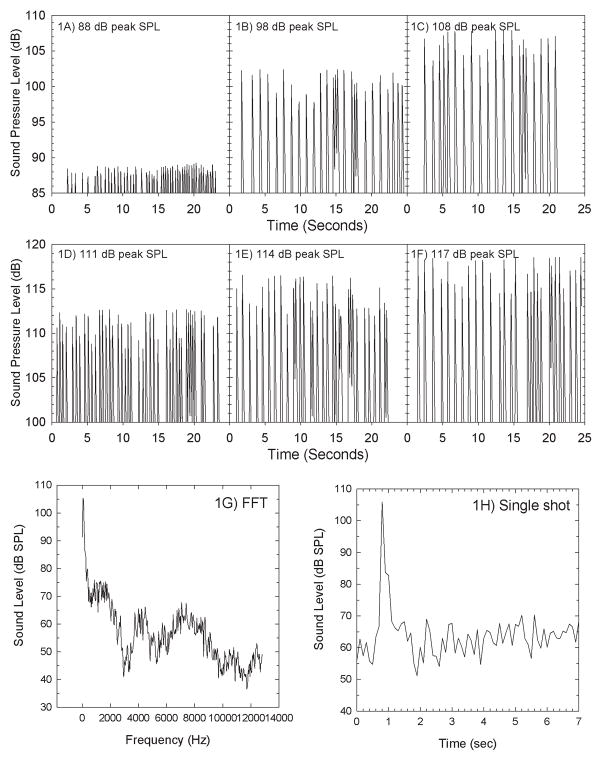Figure 1.
Sound levels shown here were measured using a Brüel & Kjær Type 4153 Artificial Ear in combination with PULSE spectrum analyzer with levels sampled at 0.125 sec (1/8 sec) intervals. Variability within a given stimulus condition is a function of the challenges inherent to accurately capturing peak SPL for brief impulse-like signals. The individual acoustical signal was routed from a Tucker-Davis-Technology RX6 to a stereo receiver (Onkyo TX-8555) that controlled signal amplitude, which ranged from 88 dB peak SPL (Figure 1A) to 108 dB peak SPL (Figure 1C) using 5 dB increments, and 111 dB peak SPL (Figure 1D) to 117 dB peak SPL (Figure 1F) using 3-dB increments. Approximately 20 seconds are shown for each stimulus level; the presentation rate varied as a function of the rate at which the Wii® zapper was triggered during the acoustic measurements. Presentation was triggered by subject response using the Wii® zapper. The sound spectrum for a single impulse is shown in Figure 1G, and the detailed time sample for a single impulse is shown in Figure 1H.

